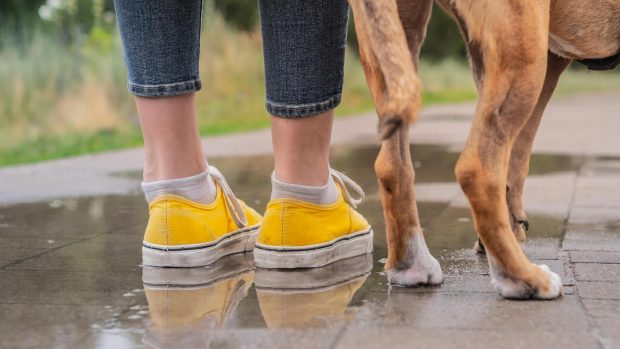The King Charles Spaniel is a distinct breed from the Cavalier King Charles Spaniel, but the two toy breeds share a common ancestry in the courts of Charles I and II. Until 1945, the two were shown together under one breed, but there are various features that distinguish one from the other. They were originally going to be named “toy spaniels”, but King Edward VII intervened to preserve the royal connection of these aristocratic breeds and so King Charles was adopted.
The original King Charles spaniels were very versatile. Beloved by the ladies of the time for their lapdog qualities, as companions and playthings, the men found them to be a mini sporting dog, with plenty of ability to flush game like their larger spaniel counterparts. However, by the turn of the 20th century, the fashion for diminutive short-faced toy breeds, such as pugs, meant that these features were sought after. This gave rise to what is now the King Charles with its domed skull and short muzzle and the smallest spaniel breed of all. Other breeders clung on to the “old type” with flatter skulls and longer muzzles, and this split off into the larger Cavalier version. Their coat colours and type of fur are the same across the two breeds.

King Charles Spaniel: fact file
Kennel Club breed group: toy
Size: from 3.6–6.3kg
Daily exercise: up to 30min a day
Coat: medium, shedding
Colours: black and tan, Blenheim (chestnut and white), ruby and tricolor. Dark eyes.
Lifespan: more than 12 years
Bark: unlike many other small breeds, the King Charles Spaniel is typically quiet, and not prone to nuisance barking. They tend to bark only if they’re excited or to alert you to visitors.
Distinctive features: a domed head and short muzzle. The mouth is slightly undershot. Long, silky coat with plenty of feathering. Ears set on low.
Temperament: reserved, gentle and affectionate.
Things to consider: a King Charles’ coat is straight and silky so shouldn’t require too much dematting, however regular grooming with an appropriate dog brush will keep it tangle-free and smooth, while every now and then a bath with one of the best dog shampoos will keep brighten up any white patches.
As a toy breed, they need mini kit, from the best small dog beds to appropriate puppy food for small breeds.
Training: King Charles Spaniels don’t require the high stimulation of their larger counterparts such as cockers and springers. They tend to be laid-back and happy to be a couch potato, or go for gentle walks. They’re loyal to their owners, so are typically easy to train. With patience and a few high-value training treats, sessions should be rewarding for both the dog and owner.
You may also enjoy reading…

All about the Cavalier King Charles Spaniel: the regal toy breed with a sporting instinct

Meet 7 of the world’s smallest dog breeds

From Inca Orchids to Dandie Dinmonts, how well do you know the world’s rarest dog breeds?

6 of the best small beds for little dogs

Best dog coats for warmth, wet walks and drying off afterwards

Booties to protect your dog’s paws against frost, flints and burning tarmac

Subscribe to Horse & Hound magazine today – and enjoy unlimited website access all year round




